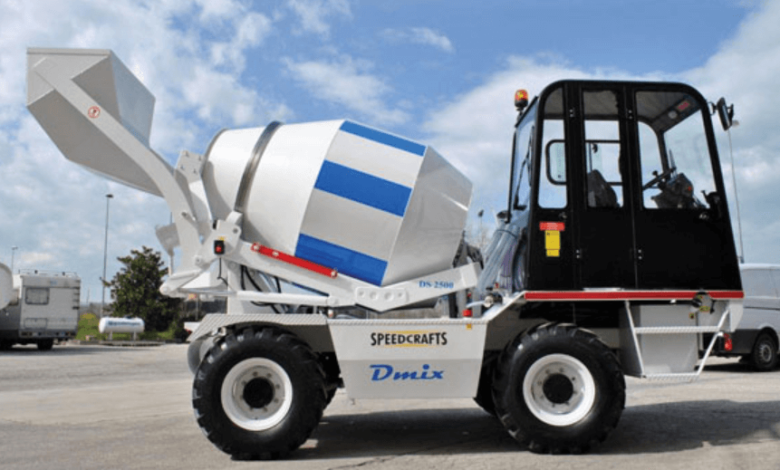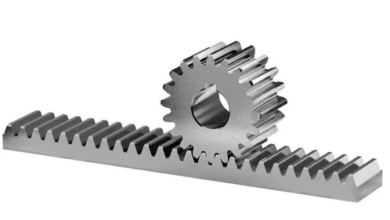self loading mixer: The Intelligent Future of Concrete Mixing in Construction

The construction industry has come a long way from hand-mixed concrete and labor-intensive pouring methods. Today, digital tools, automation, and smart equipment are rewriting the rulebook for how projects are executed on-site. One such innovation making waves across small, medium, and large-scale projects is the self loading mixer.
Combining multiple roles—loader, mixer, transporter, and discharger—into one smart machine, the self loading mixer is more than a simple utility vehicle. It represents a shift towards autonomous and highly efficient job sites. As technology evolves, this machine continues to adapt, offering contractors not only mobility and convenience but also data-driven precision and reduced waste.
What Makes the self loading mixer “Smart”?
What was once a noisy, slow, and manual process has now become seamless, digitized, and intelligent.
- Onboard digital batch management systems
- GPS tracking and route optimization
- Real-time concrete quality monitoring
- Automatic water dosing systems
- Remote diagnostics and maintenance alerts
These capabilities enable construction managers to gain tighter control over operations, improve decision-making, and reduce human error on the job site.
See also: Overcoming the Numbers Game: Empowering Entrepreneurs to Conquer Business Expenses
The Evolution of self loading mixer Technology
Let’s take a look at how far the self loading mixer has come:
1. Manual to Automated Loading
Early models required manual loading of aggregates and cement. Today, the hydraulic shovel loads materials automatically, often with a scale integrated to weigh each batch precisely.
2. Basic Mixing to Programmable Systems
Instead of relying on time-based mixing, advanced machines use sensor-based systems to ensure uniform consistency, regardless of environmental conditions or material variability.
3. Analog to Digital Controls
Touchscreen interfaces, programmable mix designs, and automated drum rotation timing have replaced traditional levers and guesswork. This leads to better precision and repeatability.
4. Fixed Units to 360° Rotating Cabins
Modern units feature operator cabins with 360° visibility and ergonomic controls, improving both safety and maneuverability on complex sites.
Integrating IoT in self loading mixer Operations
One of the most exciting advancements in construction equipment is the integration of the Internet of Things (IoT). In the case of the Self Loading Mixer IoT plays a key role in:
- Monitoring machine performance in real-time
- Tracking usage data for fleet optimization
- Alerting operators and managers to service requirements
- Logging production volumes and concrete quality metrics
IoT enables contractors to manage their assets more efficiently and avoid costly breakdowns. For large-scale projects, this data ensures accountability and supports lean construction practices.
Reducing Waste and Environmental Impact
Sustainability is not just a trend; it’s a global priority. The self loading mixer contributes to eco-friendly construction in several ways:
- Precise batching reduces raw material wastage
- On-site mixing lowers fuel consumption from transport
- Closed-loop water systems reduce freshwater use
- Reduced idling time lowers carbon emissions
With smart programming, even washout water and leftover material can be reused more effectively, reducing the environmental footprint of each pour.
Safety Upgrades in Modern Mixers
Construction sites are full of hazards. The latest self loading mixers are designed with safety in mind, featuring:
- Roll-over protection systems (ROPS)
- Ergonomic operator cabins with air filtration
- Reversing cameras and sensors
- Stability control systems for rough terrain
- Emergency stop buttons accessible from both inside and outside
These improvements protect both the operator and surrounding crew members, which is especially important on crowded or uneven sites.
Use Cases Across Industries
While primarily known for their role in general construction, self loading mixers have found a place in many specialized fields:
| Industry | Application |
| Road Construction | Mixing and pouring concrete for curbs, road slabs, culverts |
| Mining | Stabilizing mine tunnels and access roads |
| Agriculture | Laying concrete floors in barns, silos, irrigation channels |
| Disaster Recovery | Emergency shelters and infrastructure repair in remote areas |
| Military | Fast deployment of concrete for camps and airstrips |
These machines can operate day and night, rain or shine, and in remote or hostile environments where no batching plant or labor crew would normally reach.
Choosing the Right self loading mixer Model
Not all self loading mixers are created equal. Contractors should consider the following factors before investing:
| Feature | Why It Matters |
| Drum Capacity (1.2 to 5.5 m³) | Choose based on project scale and pour volume |
| Gradeability (30-45%) | Needed for hilly or uneven terrains |
| Mixing Time | Impacts project speed and concrete freshness |
| Control System Type | Digital panels offer better precision and diagnostics |
| Maintenance Access | Quick serviceability reduces downtime |
Selecting the right configuration ensures long-term productivity and ROI.
The Future of self loading mixers: What’s Next?
As construction continues to digitalize, the next generation of self loading mixers will likely feature:
- Autonomous navigation (driverless operation)
- Integration with Building Information Modeling (BIM)
- AI-assisted batching for adaptive mix ratios
- Solar hybrid power systems for sustainable operation
These enhancements will make job sites smarter, safer, and more connected than ever before.
Conclusion: self loading mixer as the Future-Ready Construction Ally
In an industry driven by deadlines, budgets, and quality standards, the self loading mixer emerges not just as a concrete mixer—but as a symbol of intelligent construction practices.
It embodies versatility, precision, and forward-thinking engineering that aligns with the industry’s shift toward automation, sustainability, and real-time responsiveness. Whether you’re building a residential complex, developing rural infrastructure, or executing military and emergency projects, this machine proves to be an irreplaceable ally.
Investing in a self loading mixer means investing in the future of smart construction—where efficiency meets innovation on every job site.




